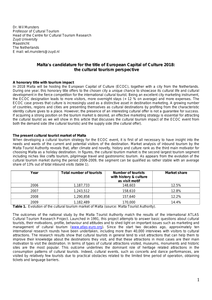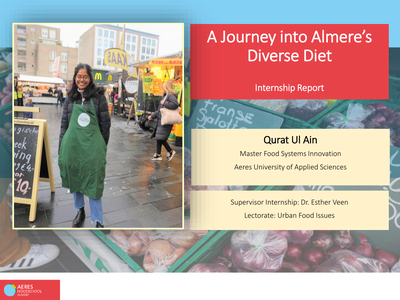Purpose: This paper aims to explore the phenomenon of molecular gastronomy by conducting empirical research focusing on renowned chefs. Design/methodology/approach: The approach taken is a literature review summarising past culinary innovations then the paper focuses on the origins and evolution of molecular gastronomy, followed by 18 phenomenological interviews with a snowball sample of world class chefs from across Europe. Findings: There is far greater confusion about what molecular gastronomy might be than is implied in previous studies. The term has become wrongly used to describe a possible culinary movement mainly as a result of media influence. Leading chefs, whose new restaurant concepts have become associated with it, reject the term. Research limitations/implications: With only 20 years of history molecular gastronomy is still a comparatively new phenomenon. This initial research presents a clear picture of its evolution so far and the increasing confusion the use of the term has created. It is still far too early to decide if these are heralding a new gastronomic movement. Practical implications: Although molecular gastronomy itself may not provide a foundation for a genuine and lasting development of cuisine it is generating fascination with the fundamental science and techniques of cuisine and showy culinary alchemy. As with nouvelle cuisine poor quality copycat chefs could bring into disrepute the reputation and practices of those who are at the vanguard of culinary and restaurant innovation. Originality/value: This paper is the first widespread primary study, across five countries, into recognised exceptional chefs' understanding of molecular gastronomy. It clarifies that molecular gastronomy was never intended to be the foundation of a culinary movement and identifies four key elements for the development of lasting cuisine movements and trends.
LINK
We explore the role of restaurants and food events in promoting local and regional gastronomy in the Minho region in Northern Portugal. Interviews with restaurant owners and event organizers in this mainly rural region reveal that innovation is driven mainly by changing consumer tastes, but also con-strained by consumer expectations of low prices. Restaurants maintain a family-run structure, also due to a lack of human resources. The main thrust of innovation lies in creating a convivial atmosphere, but there is less emphasis on locally produced food ingredients. In the long run this may undermine the regional food culture and its authenticity, despite the perceived importance of tradition.
MULTIFILE
Purpose: This paper aims to analyse the development of research on gastronomic tourism experiences and chart its relationship to foundational management and marketing literature as well as the tourism and hospitality field. Design/methodology/approach: The author develops a literature review of papers in specialist journals and the SCOPUS database to identify major research themes and the evolution of experience and gastronomic experience research. Findings: Gastronomy is an increasingly important element of tourism experiences. Gastronomic experience research in tourism mirrors the evolution in management and marketing theory from rational information processing approaches to emotional and hedonistic approaches and analysis of relationality and co-creation. The paper sketches a development from Experience 1.0 (producer-orientated) to Experience 2.0 (co-creation) to Experience 3.0 (foodscapes) in gastronomic experiences in tourism research. Research limitations/implications: Increasing complexity of gastronomic experiences requires a more holistic analytic approach, including more attention for relational and co-creational processes. Linking together different experience elements and experience phases requires more holistic and contextual research approaches. Practical implications: Hospitality organizations should recognize the differentiated and complex nature of gastronomic experiences, the different touchpoints within the customer journey and their relationship to experience outcomes. The development of hybrid gastronomic experiences offers both opportunities and challenges for the future. Originality/value: This quantitative and qualitative literature analysis underlines the need for a more holistic approach to gastronomic experiences, covering different experiential phases and contexts of production and consumption.
DOCUMENT
This study describes the process of developing a typical dish for a slow city, using the lens of co-creation and coproduction. The slow movement argues that appreciation of local cuisine increases through events and developing slow food practices. Participant observation and interviews with actors involved in the development process revealed the symbolic components used to enhance the cultural heritage of Vizela, Portugal as a slow city. The research shows that the slow city initiative has gradually provided the basis for a gastronomic attraction to support tourist development. The development of a typical dish for the city was found to aid the recovery and revalorization of local knowledge, while the support of gastronomic culture by the local authority and community participation helped to strengthen regional identity and to develop an attractive and sustainable tourist offer. Thus, this study revealed the importance of residents in this development process as well as showed requirements that may support the rescue and cocreation of typical dishes for tourism.
MULTIFILE
Paper presentation on how hospitality business and agrofood sector can contribute to sustainable development through hospitality principles
DOCUMENT

De kandidatuur van Malta als Europese Culturele hoofdstad in cultuurtoeristisch perspectief
DOCUMENT

There is a strong relation between food and identity. Especially when people move to another country, traditional food (or simply food from their country of origin), symbolizes a link with culture, communityand ethnic identity. As people move around the globe they introduce new foods in the places they land. Almere is becoming one of the largest majority minority cities of the Netherlands. Walking around thecity, the diversity of food ingredients and eating cultures as shown in shops and restaurants is immediately clear. The aim of this project was to get an insight into the diets of the residents of Almere so as to learn about eating patterns in a multicultural city and how multiculturality affects the diets of both newcomers and people who have been living here for generations.
DOCUMENT

Purpose: Little is known about how tourists’ eating habits change between everyday life and holidays. This study aims to identify market segments based on changes in food consumption and experiences of a sun-and-sea destination’s local food. The authors evaluate to what extent tourists consume local food and assess the contribution of local food experiences to the tourists’ overall experience. Design/methodology/approach: The target population was all tourists visiting the Algarve in the Summer 2018 and included both domestic and international sun-and-sea tourists. A sample of 378 valid questionnaires was collected. Data analysis included descriptive analysis, statistical tests and cluster analysis. Findings: Cluster analysis identified three segments: non-foodies, selective foodies and local gastronomy foodies. Results indicate that tourists change their eating habits during holidays, eating significantly more seafood and fish and less legumes, meat, fast food and cereals and their derivatives. International and domestic sun-and-sea tourists reported that eating local food contributes significantly to their overall tourism experience. Practical implications: Sun-and-sea destinations should promote the offer of local dishes, especially those that include locally produced fish and seafood, to improve the tourist experience, differentiate the destination and increase sustainability. Originality/value: The authors address three identified research gaps: a posteriori segmentation based on tourists’ food consumption behaviour; measurement of changes in eating practices between home and in a sun-and-sea destination; and assessment of the role of food experiences to overall tourism experience of tourists visiting a sun-and-sea destination.
LINK